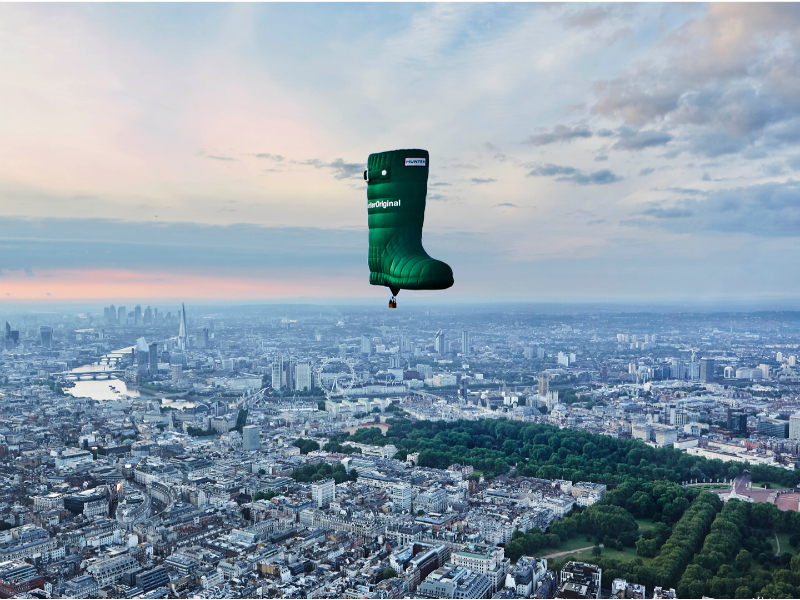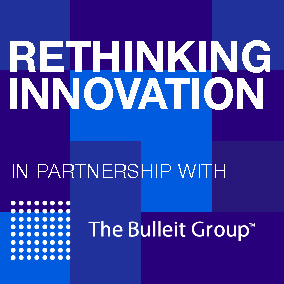Marivi Lerdo-de-Tejada 03 Sep 2019 // 2:27PM GMT

Why should the PR industry care about design thinking? Let's first look at a recent piece from the Harvard Business Review feature and how it describes design thinking (the emphasis is ours): “processes, methods, and tools for creating human-centered products, services, solutions, and experiences.It involves establishing a personal connection with the people—or users—for whom a solution is being developed.”
Likewise, a study from McKinsey found that companies that invested in design processes, capabilities and leadership over the past decade “including design stalwarts such as Disney, Nike, and P&G, outperformed the rest of the index by 211%.”
The McKinsey piece also noted that highly-valued brands, like Aston Martin and Burberry, “both have placed design leaders as company directors, to ensure that the voice of the customer and the importance of product quality are never far from the top management team.” Clearly, smart brands know that innovating on the design front can be an equally important way of differentiating — and communicating — the customer experience.
“It is more than just how a product looks,” says Kyle Arteaga, co-founder of the Bulleit Group, a boutique technology PR firm. “It's every single touchpoint that a customer, employee, investor, partner, or prospect might have. As PR professionals, we own or influence more of these touch points than you might think.”
Take, for instance, another company with a recognizable design: Hunter, with its well-known Wellington rain boots or “Wellies,” as they are affectionately nicknamed. In recent years, Hunter has introduced technical materials, added new product categories like backpacks, jackets and accessories, and even collaborated with Stella McCartney on a fashionable boot made of sustainable materials.
Hunter’s marketing campaigns, however, often focuses on the company’s heritage and signature design, rather than the latest additions to the line or improvements. Edward Padron, a director at LaForce, a marketing communications firm that works with Hunter, described one of the client’s recent efforts.
“Last year, Hunter launched The Original Flying Boot, a 120-foot balloon in the shape of the iconic Wellington boot that traveled across Europe and the US,” said Padron. “The balloon’s tour was meant to celebrate the brand’s heritage in destinations that themselves represent iconic design, such as the London skyline, the Hollywood sign, and at the Albuquerque balloon festival.”
Cementing the juxtaposition of these images in people’s minds reminded customers that when they donned their classic ‘wellies’ or other products from Hunter, the experience was more than merely putting on an ordinary pair of boots. It also boosted sales, despite the campaign’s lack of focus on tangible features. “The Original Flying Boot contributed to Hunter’s record revenue,” said Padron. “Sales in the US for 2018 rose 13% year-over-year.”
While highlighting design can work for marketing, Bulleit’s Arteaga points out that it can also work to solve and communicate customer pain points. For example, Procter & Gamble Ventures Unit, a Bulleit Group client, recently developed Zevo, a bug-killing spray and indoor trap.
“In developing the product, the team identified the tension between wanting to get rid of bugs and concerns that household pesticides might have chemicals that are harmful to children and pets,” says Arteaga. “The team unearthed the consumer demand for an all natural pesticide. And the packaging and branding of the products also reflect this with a clear bottle, clear liquid, and natural citrus/flowery scent.”
‘The Marketing is Focused on Celebrating the Lifestyle’
One of the most iconic products of all time is, of course, the Coca Cola bottle. According to Vince Voron, an Emmy-award winning creative director who has led design teams at Apple, Coca Cola and Dolby, the design brief for the Coca Cola bottle was clearly focused on differentiating how consumers experienced the brand and product.
“The brief was simple,” explained Voron. “First of all, the bottle needed to be recognized by hand, not sight, when one puts their hand into an ice chest – hence the unique form. Second, it needed to be recognizable even when broken – hence the Georgia green color of the glass.”
Yet, as more people are shopping online without even going to a store to see the products they are purchasing, the aspects that lure them are shifting. Brand and customer experience, for instance, are playing a larger role in attracting and retaining consumers. Voron, who spent eight years at Apple, believes the technology giant is one of the most successful brands to blend product and customer experience.
“In Apple’s early days, their marketing communication strategies were centered around the features and horsepower of their products,” says Voron. “Today, the majority of Apple’s marketing communications are based on the emotive experience of using their products and how they improve your life.”
A much newer brand with a similar approach is Away Travel. The company, founded in 2015 by former Warby Parker execs Jennifer Rubio and Stephanie Korey, describes itself as “a modern lifestyle brand creating thoughtful products designed to transform travel.” Before Away suitcases even came to market, the company released a hardbound book, “The Places We Return To” that featured artists, writers, and photographers reflecting on their favorite destinations. The collection was initially created as a way to launch the brand because its suitcases weren’t ready for market during the holiday rush. The collection sold out. And Away has since launched a print and digital travel magazine and a podcast that explores the personal dimensions of traveling, Airplane Mode.
“Away has evolved into a lifestyle travel brand and has found success by emphasizing the excitement of travel for a younger consumer that, via social media and Instagram, feels more connected to the world and more inspired to travel to exotic destinations,” says LaForce’s Padron. “The design and price is its primary offering, but the marketing is focused on celebrating the lifestyle of travel.”
Design, in a holistic sense, is especially important for emerging tech, adds Arteaga. For instance, Bulleit’s client CTRL-labs envisions a future where humans will be control machines with their brains. Rather than rely on electroencephalography headsets, which are seen as bulky and cumbersome, the startup is using armbands that pick up motor neurons.
“We often talk about how AR/VR/AI have their potential to affect our day-to-day lives,” Arteaga says. “What is often overlooked is how seamless the experience will be, and how we’ll actually get to this sci-fi-like future... To get this technology into the mainstream, the startup knows it has to be as non-invasive route as possible.”
This article is part of a series exploring the topic of innovation in partnership with the Bulleit Group. You can read more from the series here.


































.jpg)
































